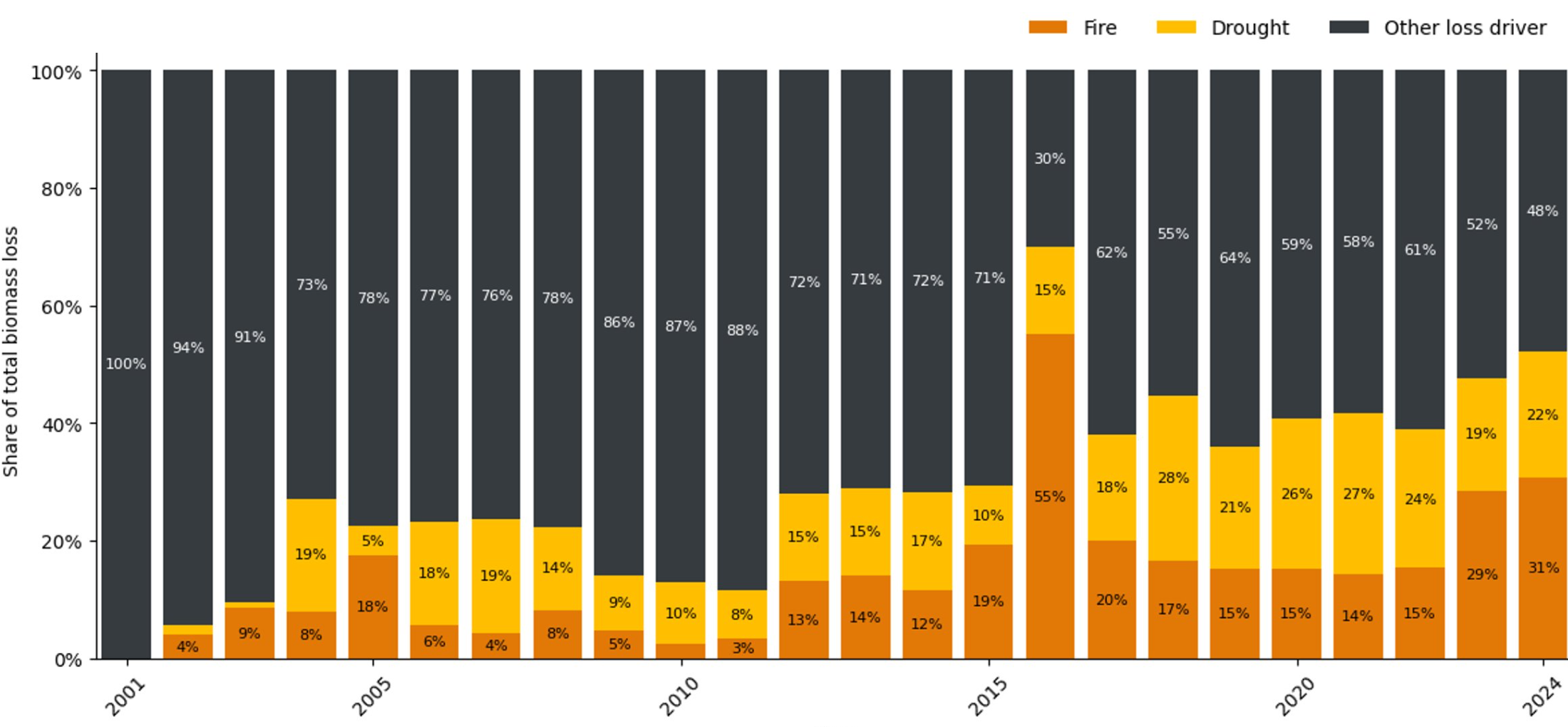CarbonPool’s climate modellers, Dr Kasia Tokarska de los Santos and Dr Oleksandr Kit, collaborated with Chloris Geospatial to investigate a key question: Why are forests disappearing, and what is driving the losses?
Using 25 years of high-resolution satellite biomass data from Chloris, they analysed over 70 carbon sequestration projects across the Amazon Basin (including REDD+, IFM and ARR projects). By linking biomass changes to drought, fire, and other drivers, they quantified what’s causing forest carbon losses, and how these risks are evolving over time.
The results show a clear shift. In the early 2000s, most biomass loss was caused by human activity: logging, agriculture, and land conversion. Today, nearly half of forest loss across the Amazon’s carbon projects is due to natural hazards such as drought and fire, reflecting the growing influence of natural risks and climate change. This shift has far-reaching implications for how nature-based carbon projects are financed and insured.
From science to insuring nature-based carbon projects
The study applies attribution analysis (a statistical approach that differentiates between loss drivers) to satellite data and hazard records from NASA and global drought indices. The goal is straightforward: understand why biomass declines. The use case for this is better measuring, pricing and insuring natural hazards in carbon projects.

For us here at CarbonPool, that clarity is game-changing. When risks can be quantified (e.g. distinguishing drought-driven from fire-driven losses), coverage can be priced more precisely and fairly. Insurance with a more granular pricing structure improves confidence for investors and enables more developers to secure the funding they desperately need to implement these carbon projects.
Building resilience through data
The analysis also highlights how vulnerability varies across forest and project types: afforestation projects in their early-stage are sensitive to drought, while many REDD+ projects are prone to large-scale fires.
As climate change amplifies these hazards, data-driven insights are crucial for designing resilient projects – from adjusting planting strategies like species selection, location and irrigation design, to reinforcing firebreaks for projects already underway.
CarbonPool’s in-kind insurance model closes the loop. By replacing reversed carbon credits with high-quality credits (“in-kind replacement”) from our balance sheet, it preserves project permanence and reinforces trust across the carbon market.
Forests are no longer disappearing mainly because of human activity, but increasingly because of natural risks and the planet’s changing climate. Understanding these risks through data is the foundation toward managing them effectively.
By combining innovative insurance with advanced science, the carbon markets can scale with integrity, and accelerate global climate action.

Read the technical paper here

